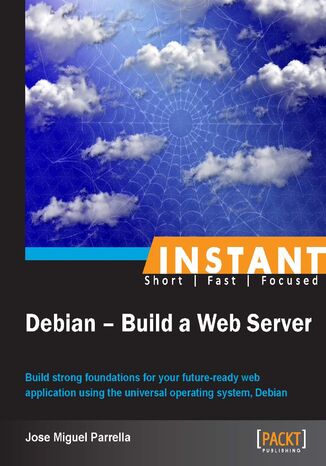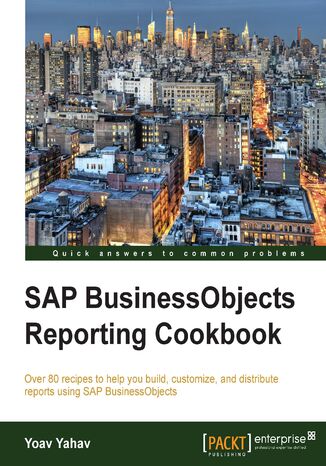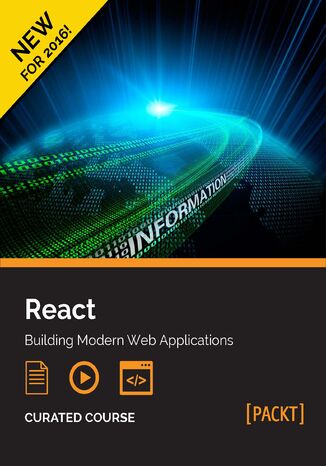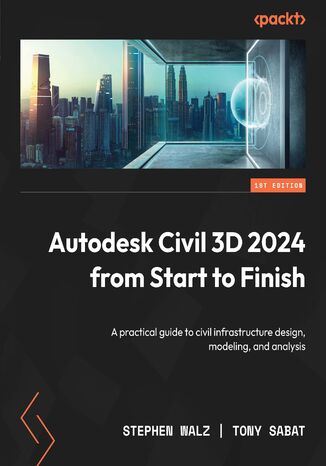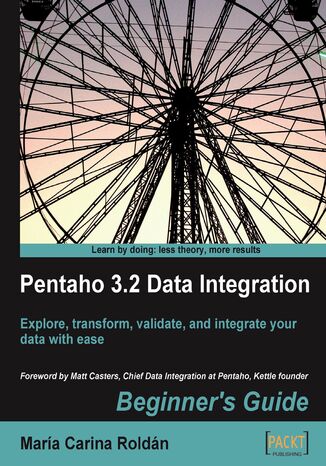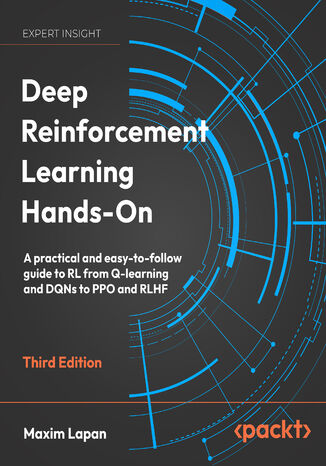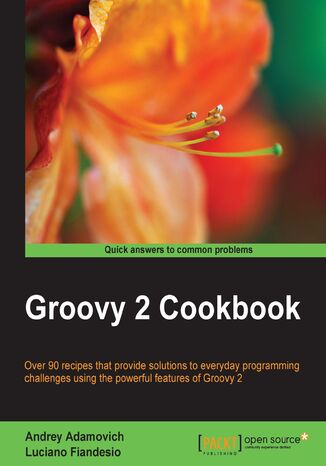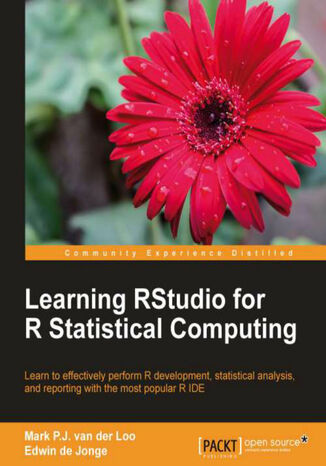Categories
Ebooks
-
Business and economy
- Bitcoin
- Businesswoman
- Coaching
- Controlling
- E-business
- Economy
- Finances
- Stocks and investments
- Personal competence
- Computer in the office
- Communication and negotiation
- Small company
- Marketing
- Motivation
- Multimedia trainings
- Real estate
- Persuasion and NLP
- Taxes
- Social policy
- Guides
- Presentations
- Leadership
- Public Relation
- Reports, analyses
- Secret
- Social Media
- Sales
- Start-up
- Your career
- Management
- Project management
- Human Resources
-
For children
-
For youth
-
Education
-
Encyclopedias, dictionaries
-
E-press
- Architektura i wnętrza
- Health and Safety
- Biznes i Ekonomia
- Home and garden
- E-business
- Ekonomia i finanse
- Esoterecism
- Finances
- Personal finance
- Business
- Photography
- Computer science
- HR & Payroll
- For women
- Computers, Excel
- Accounts
- Culture and literature
- Scientific and academic
- Environmental protection
- Opinion-forming
- Education
- Taxes
- Travelling
- Psychology
- Religion
- Agriculture
- Book and press market
- Transport and Spedition
- Healthand beauty
-
History
-
Computer science
- Office applications
- Data bases
- Bioinformatics
- IT business
- CAD/CAM
- Digital Lifestyle
- DTP
- Electronics
- Digital photography
- Computer graphics
- Games
- Hacking
- Hardware
- IT w ekonomii
- Scientific software package
- School textbooks
- Computer basics
- Programming
- Mobile programming
- Internet servers
- Computer networks
- Start-up
- Operational systems
- Artificial intelligence
- Technology for children
- Webmastering
-
Other
-
Foreign languages
-
Culture and art
-
School reading books
-
Literature
- Antology
- Ballade
- Biographies and autobiographies
- For adults
- Dramas
- Diaries, memoirs, letters
- Epic, epopee
- Essay
- Fantasy and science fiction
- Feuilletons
- Work of fiction
- Humour and satire
- Other
- Classical
- Crime fiction
- Non-fiction
- Fiction
- Mity i legendy
- Nobelists
- Novellas
- Moral
- Okultyzm i magia
- Short stories
- Memoirs
- Travelling
- Narrative poetry
- Poetry
- Politics
- Popular science
- Novel
- Historical novel
- Prose
- Adventure
- Journalism, publicism
- Reportage novels
- Romans i literatura obyczajowa
- Sensational
- Thriller, Horror
- Interviews and memoirs
-
Natural sciences
-
Social sciences
-
School textbooks
-
Popular science and academic
- Archeology
- Bibliotekoznawstwo
- Cinema studies
- Philology
- Polish philology
- Philosophy
- Finanse i bankowość
- Geography
- Economy
- Trade. World economy
- History and archeology
- History of art and architecture
- Cultural studies
- Linguistics
- Literary studies
- Logistics
- Maths
- Medicine
- Humanities
- Pedagogy
- Educational aids
- Popular science
- Other
- Psychology
- Sociology
- Theatre studies
- Theology
- Economic theories and teachings
- Transport i spedycja
- Physical education
- Zarządzanie i marketing
-
Guides
-
Game guides
-
Professional and specialist guides
-
Law
- Health and Safety
- History
- Road Code. Driving license
- Law studies
- Healthcare
- General. Compendium of knowledge
- Academic textbooks
- Other
- Construction and local law
- Civil law
- Financial law
- Economic law
- Economic and trade law
- Criminal law
- Criminal law. Criminal offenses. Criminology
- International law
- International law
- Health care law
- Educational law
- Tax law
- Labor and social security law
- Public, constitutional and administrative law
- Family and Guardianship Code
- agricultural law
- Social law, labour law
- European Union law
- Industry
- Agricultural and environmental
- Dictionaries and encyclopedia
- Public procurement
- Management
-
Tourist guides and travel
- Africa
- Albums
- Southern America
- North and Central America
- Australia, New Zealand, Oceania
- Austria
- Asia
- Balkans
- Middle East
- Bulgary
- China
- Croatia
- The Czech Republic
- Denmark
- Egipt
- Estonia
- Europe
- France
- Mountains
- Greece
- Spain
- Holand
- Iceland
- Lithuania
- Latvia
- Mapy, Plany miast, Atlasy
- Mini travel guides
- Germany
- Norway
- Active travelling
- Poland
- Portugal
- Other
- Przewodniki po hotelach i restauracjach
- Russia
- Romania
- Slovakia
- Slovenia
- Switzerland
- Sweden
- World
- Turkey
- Ukraine
- Hungary
- Great Britain
- Italy
-
Psychology
- Philosophy of life
- Kompetencje psychospołeczne
- Interpersonal communication
- Mindfulness
- General
- Persuasion and NLP
- Academic psychology
- Psychology of soul and mind
- Work psychology
- Relacje i związki
- Parenting and children psychology
- Problem solving
- Intellectual growth
- Secret
- Sexapeal
- Seduction
- Appearance and image
- Philosophy of life
-
Religion
-
Sport, fitness, diets
-
Technology and mechanics
Audiobooks
-
Business and economy
- Bitcoin
- Businesswoman
- Coaching
- Controlling
- E-business
- Economy
- Finances
- Stocks and investments
- Personal competence
- Communication and negotiation
- Small company
- Marketing
- Motivation
- Real estate
- Persuasion and NLP
- Taxes
- Social policy
- Guides
- Presentations
- Leadership
- Public Relation
- Secret
- Social Media
- Sales
- Start-up
- Your career
- Management
- Project management
- Human Resources
-
For children
-
For youth
-
Education
-
Encyclopedias, dictionaries
-
E-press
-
History
-
Computer science
-
Other
-
Foreign languages
-
Culture and art
-
School reading books
-
Literature
- Antology
- Ballade
- Biographies and autobiographies
- For adults
- Dramas
- Diaries, memoirs, letters
- Epic, epopee
- Essay
- Fantasy and science fiction
- Feuilletons
- Work of fiction
- Humour and satire
- Other
- Classical
- Crime fiction
- Non-fiction
- Fiction
- Mity i legendy
- Nobelists
- Novellas
- Moral
- Okultyzm i magia
- Short stories
- Memoirs
- Travelling
- Poetry
- Politics
- Popular science
- Novel
- Historical novel
- Prose
- Adventure
- Journalism, publicism
- Reportage novels
- Romans i literatura obyczajowa
- Sensational
- Thriller, Horror
- Interviews and memoirs
-
Natural sciences
-
Social sciences
-
Popular science and academic
-
Guides
-
Professional and specialist guides
-
Law
-
Tourist guides and travel
-
Psychology
- Philosophy of life
- Interpersonal communication
- Mindfulness
- General
- Persuasion and NLP
- Academic psychology
- Psychology of soul and mind
- Work psychology
- Relacje i związki
- Parenting and children psychology
- Problem solving
- Intellectual growth
- Secret
- Sexapeal
- Seduction
- Appearance and image
- Philosophy of life
-
Religion
-
Sport, fitness, diets
-
Technology and mechanics
Videocourses
-
Data bases
-
Big Data
-
Biznes, ekonomia i marketing
-
Cybersecurity
-
Data Science
-
DevOps
-
For children
-
Electronics
-
Graphics/Video/CAX
-
Games
-
Microsoft Office
-
Development tools
-
Programming
-
Personal growth
-
Computer networks
-
Operational systems
-
Software testing
-
Mobile devices
-
UX/UI
-
Web development
-
Management
Podcasts
Debian is one of the most popular Linux-based operating systems, with over 37 thousand software packages available in several architectures. This universal operating system provides the foundation for thousands of web servers. It is easy to install, stable and provides mechanisms for system security.Starting with an insightful discussion on the architectures and methods of installing Debian, we’ll also discuss cues to plan ahead for scalability. We’ll then explore how to configure and use APT to install necessary software, taking you all the way through to presenting scenarios for security, backup/restore and maintenance.Debian: Build a Web Server How-To will help you effectively setup and deploy a Debian-based Web server with strong foundations for the future of your Web application. It teaches concepts such as library and framework availability and suitability under the APT system, how to read and process logs and events and how to respond to security incidents. Additionally it also covers planning and executing a backup and restore strategy and how to deploy clusters and proxies.The book will help you navigate installation methods, understand how to configure APT and how to use it to deploy the application parts and how to tackle common management scenarios, ending up with a ready-to-go Web server running Debian.
React: Building Modern Web Applications. Building Modern Web Applications
Jonathan S Hayward, Artemij Fedosejev, Narayan Prusty, Adam Horton, ...
ReactJS has helped to transform the web as we know it. Designed by Facebook to help developers build rapid, responsive UI that can deal with data-intensive usage, it’s an essential component in any web developer’s skillset. This ReactJS course, in five connected modules, provides you with a fast, engaging and practical route into ReactJS—so you can build powerful, elegant, and modern web applications.Beginning with the Reactive Programming with JavaScript module, you will learn how to take advantage of a reactive and functional programming paradigm to rethink how you approach your JavaScript code. It’s built to help you understand the concepts, relevant and applicable for any frontend developer.You’ll then dive a little deeper into ReactJS. The second module gives you a rapid look through the fundamentals of ReactJS, showing you how to build a basic application and demonstrating how to implement the Flux architecture.In the third module you will get to grips with ES6—this will make you a more fluent JavaScript developer, giving you control over ReactJS. You can put your old JavaScript hacks aside and instead explore how to create ES6 custom iterators.In the final two modules you’ll learn how to fully master ReactJS, exploring its wider ecosystem of tools that have helped to make it one of the most important tools in web development today. Ending with insights and guidance on React Native, the tool built for today’s demand for native, intuitive user experiences and interfaces, with this course you can be confident in building dynamic and modern apps with React.
Civil infrastructure projects demand precision, collaboration, and the ability to adapt to design changes quickly. This book shows how Civil 3D 2024 can help you streamline workflows, reduce rework, and improve project accuracy—whether you're working solo or in a large engineering team.You'll learn how to set up your environment, manage survey data, and model surfaces, alignments, profiles, and utilities using Civil 3D’s comprehensive toolset. With a strong focus on real-world design practices, this book demonstrates how to use intelligent objects and dynamic documentation features to handle changes efficiently across distributed teams.You’ll also work with partner tools that enhance Civil 3D’s capabilities, ensuring you can manage data at scale, produce accurate documentation, and deliver designs that meet stakeholder expectations.Written by seasoned civil engineers and Autodesk-certified professionals, this book brings together best practices, project-specific workflows, and insights into maximizing productivity with Civil 3D and its companion tools.
María Carina Roldán, Doug Moran
Pentaho Data Integration (a.k.a. Kettle) is a full-featured open source ETL (Extract, Transform, and Load) solution. Although PDI is a feature-rich tool, effectively capturing, manipulating, cleansing, transferring, and loading data can get complicated.This book is full of practical examples that will help you to take advantage of Pentaho Data Integration's graphical, drag-and-drop design environment. You will quickly get started with Pentaho Data Integration by following the step-by-step guidance in this book. The useful tips in this book will encourage you to exploit powerful features of Pentaho Data Integration and perform ETL operations with ease.Starting with the installation of the PDI software, this book will teach you all the key PDI concepts. Each chapter introduces new features, allowing you to gradually get involved with the tool. First, you will learn to work with plain files, and to do all kinds of data manipulation. Then, the book gives you a primer on databases and teaches you how to work with databases inside PDI. Not only that, you'll be given an introduction to data warehouse concepts and you will learn to load data in a data warehouse. After that, you will learn to implement simple and complex processes.Once you've learned all the basics, you will build a simple datamart that will serve to reinforce all the concepts learned through the book.
Start your journey into reinforcement learning (RL) and reward yourself with the third edition of Deep Reinforcement Learning Hands-On. This book takes you through the basics of RL to more advanced concepts with the help of various applications, including game playing, discrete optimization, stock trading, and web browser navigation. By walking you through landmark research papers in the fi eld, this deep RL book will equip you with practical knowledge of RL and the theoretical foundation to understand and implement most modern RL papers. The book retains its approach of providing concise and easy-to-follow explanations from the previous editions. You'll work through practical and diverse examples, from grid environments and games to stock trading and RL agents in web environments, to give you a well-rounded understanding of RL, its capabilities, and its use cases. You'll learn about key topics, such as deep Q-networks (DQNs), policy gradient methods, continuous control problems, and highly scalable, non-gradient methods. If you want to learn about RL through a practical approach using OpenAI Gym and PyTorch, concise explanations, and the incremental development of topics, then Deep Reinforcement Learning Hands-On, Third Edition, is your ideal companion
Luciano Fiandesio, Andrey Adamovich, Andrey Adamovich And Luciano Fiandesio
Get up to speed with Groovy, a language for the Java Virtual Machine (JVM) that integrates features of both object-oriented and functional programming. This book will show you the powerful features of Groovy 2 applied to real-world scenarios and how the dynamic nature of the language makes it very simple to tackle problems that would otherwise require hours or days of research and implementation.Groovy 2 Cookbook contains a vast number of recipes covering many facets of today's programming landscape. From language-specific topics such as closures and metaprogramming, to more advanced applications of Groovy flexibility such as DSL and testing techniques, this book gives you quick solutions to everyday problems.The recipes in this book start from the basics of installing Groovy and running your first scripts and continue with progressively more advanced examples that will help you to take advantage of the language's amazing features.Packed with hundreds of tried-and-true Groovy recipes, Groovy 2 Cookbook includes code segments covering many specialized APIs to work with files and collections, manipulate XML, work with REST services and JSON, create asynchronous tasks, and more. But Groovy does more than just ease traditional Java development: it brings modern programming features to the Java platform like closures, duck-typing, and metaprogramming.In this new book, you'll find code examples that you can use in your projects right away along with a discussion about how and why the solution works. Focusing on what's useful and tricky, Groovy 2 Cookbook offers a wealth of useful code for all Java and Groovy programmers, not just advanced practitioners.
Learning RStudio for R Statistical Computing
Mark P.J. van der Loo, RStudio Inc, Edwin de Jonge, Mark van der Loo
Data is coming at us faster, dirtier, and at an ever increasing rate. The necessity to handle many, complex statistical analysis projects is hitting statisticians and analysts across the globe. This book will show you how to deal with it like never before, thus providing an edge and improving productivity.Learning RStudio for R Statistical Computing will teach you how to quickly and efficiently create and manage statistical analysis projects, import data, develop R scripts, and generate reports and graphics. R developers will learn about package development, coding principles, and version control with RStudio.This book will help you to learn and understand RStudio features to effectively perform statistical analysis and reporting, code editing, and R development.The book starts with a quick introduction where you will learn to load data, perform simple analysis, plot a graph, and generate automatic reports. You will then be able to explore the available features for effective coding, graphical analysis, R project management, report generation, and even project management.Learning RStudio for R Statistical Computing is stuffed with feature-rich and easy-to-understand examples, through step-by-step instructions helping you to quickly master the most popular IDE for R development.

